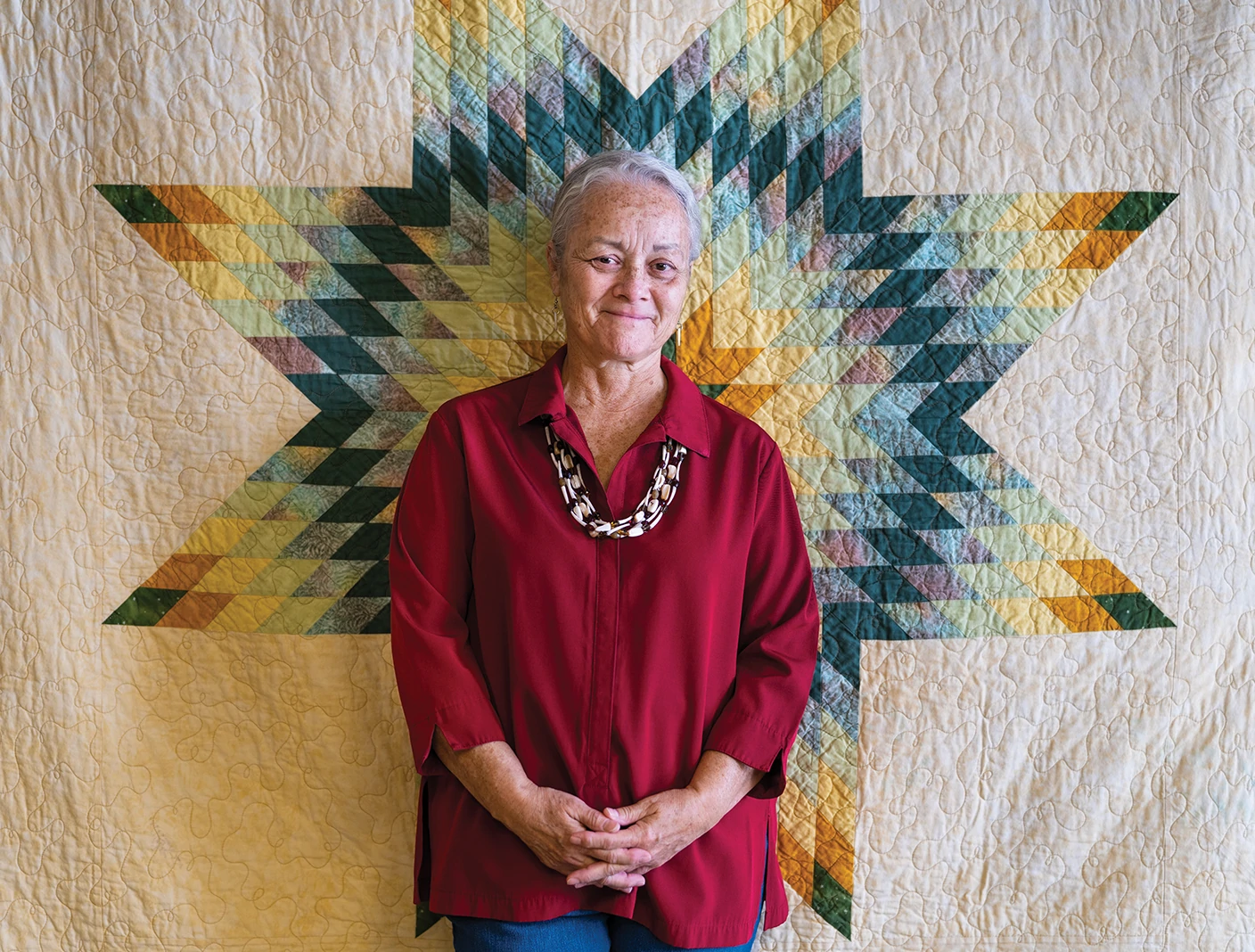By Gwen Westerman
Wakpa. The Dakota word for “river.” But it is more than a word. Wakpa is the source of life. Rivers carry our first medicine, mni, that can nourish and heal us. To be near a river can be soothing, and to hear the sounds of water flowing, sounds of water filling, sounds of water falling. To be on a river can calm us, as we are carried along on the unseen current just beneath its smooth surface, to drift with the river and let it move us. Wakpa sustains life, including the fish and plants that nourish us.
We look for evidence of rivers on faraway planets, dry riverbeds that we speculate may be remnants of water. Scientists suggest that lines on the surface of those planets may indicate the ability to sustain life as we know it.
As human beings, our bodies are approximately 60% water, our hearts 70%, and our lungs more than 80%. Water is important to every living cell and acts first as a vital building block. As Dakota people, we knew that long before scientists discovered it. Mni pejuta tokaheya heca. Water is our first medicine.
Behind our house, the river that runs through the ravine floods almost every spring. We can hear it rushing, roaring, rising beyond its banks. New channels emerge from the flood waters, and old ones are cut off as the course of the river changes. Ground water is replenished and helps fill our well. When the water recedes, vital nutrients have been restored to the land, the wetlands are renewed, and grasses and cattails emerge. Saplings sprout, throngs of birds sing among the trees.
But drought has left its mark on the river this year. Water now runs less than half the width of the riverbed. Wakpa kiƞ hnuh ni. Still the river lives. Still the tree frogs and crickets and locusts sing. And still, we honor the lifeways that are dependent on it.
Breathe Deep and Sing
We sing for the mussels,
we, the otters and beavers, the frogs and dragonflies,
the waterbirds and songbirds, the coyotes too.
We breathe deep, and sing for the mussels
who are the lungs of the Mississippi River.
Our river—polluted by
sewage and wastewater,
dredged and dammed,
pockmarked by dead zones
of chemicals and dyes,
banked by the edge
of destruction.
Our river—
A global super-flyway,
it flows through the heart of us,
flowed through the heart of us
for centuries, beyond centuries,
beyond memory.
Through wetlands and backwaters,
communities and economies,
plagued by invasive species,
invasive humans—
environmental degradation
that flowed through the heart of us.
Our river—
It calls to us, it beckons us,
our dreams flow along with it.
So, we sing for the mussels,
we, the otters and beavers, the frogs and dragonflies,
the waterbirds and songbirds, the coyotes too.
We breathe deep and sing for the mussels
who are the silent sentinels of our river.
They hold the stories and the pain of
our river—40, 70, 200 years ago.
Like the trees above them
along the banks of
our river, the rings of the mussels’ shells
are a living record of our environment
and of our river.
They mark the resilience,
the struggles, the restoration
of floodplains and river bottoms,
the restoration of health and hearts.
How do we heal our river
without healing ourselves?
Our river—
It calls to us, it beckons us,
our dreams flow along with it.
Its water shapes us, embraces us,
and is our first medicine.
So, we sing for the mussels,
we, the otters and beavers, the frogs and dragonflies,
the waterbirds and songbirds, the coyotes too.
Breathe deep and sing with us for the mussels.
And we will sing for you.
Gwen Westerman’s roots are deep in the landscape of the tall grass prairie and reveal themselves in her art and writing through the languages and traditions of her family. She is an enrolled member of the Sisseton Wahpeton Dakota Oyate, her father’s people, and a citizen of the Cherokee Nation, her mother’s people. She is the co-author of Mni Sota Makoce: The Land of the Dakota which won a 2013 Minnesota Book Award, and a 2014 Hognander Minnesota History Award.
Gwen’s poems, essays, and short stories appear in numerous publications, including the Norton Anthology of Native Nations Poetry (2020); the Minnesota issue of Quiltfolk (January 2020); and New Poets of Native Nations (Graywolf Press, 2018). Her poetry collection Follow the Blackbirds (2013) was published by Michigan State University Press. She was named Poet Laureate of Minnesota in 2021 by Governor Tim Walz and Lieutenant Governor Peggy Flanagan.
Gwen is also a fiber artist, known for her quilts, which have won awards at the juried shows of the Northern Plains Indian Art Market in Sioux Falls, the Eiteljorg Indian Art Market in Indianapolis, and the Heard Museum Guild Indian Art Fair & Market in Phoenix. Her work is in the permanent collections of the Red Cloud Heritage Center Museum in Pine Ridge, the University Art Galleries at the University of South Dakota, the Great Plains Art Museum in Lincoln, Nebraska, and the Minnesota Historical Society in St. Paul.
Dr. Gwen Westerman holds her BA and MA in English from Oklahoma State University, and PhD in English from the University of Kansas. She teaches American and Native Nations literatures, Technical Communication, and Humanities to undergraduate and graduate students at Minnesota State University, Mankato. She is a Distinguished Faculty Scholar in recognition of her work as a scholar, poet, and artist.
For more information, see: TPT Originals and GwenWesterman.com.
Photo by David Ellis
